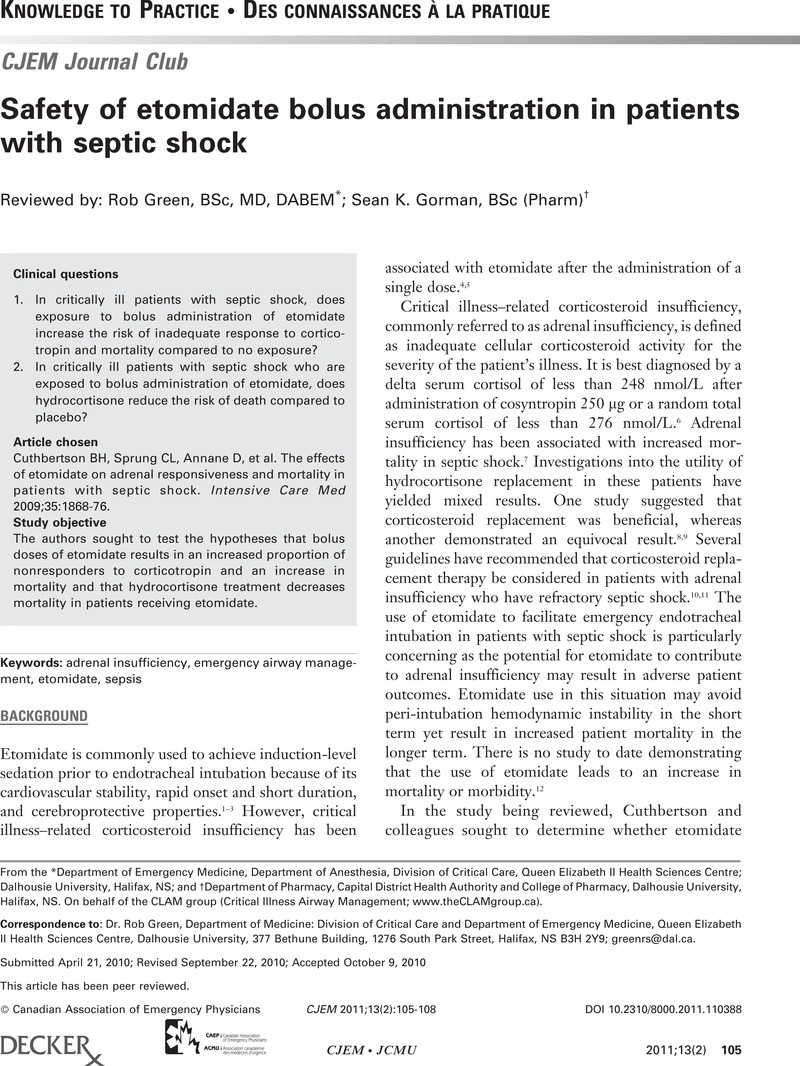Crossref Citations
This article has been cited by the following publications. This list is generated based on data provided by Crossref.
Srivastava, Swati
Ghosh, Sujata
Bhattacharya, Dipasri
Nayak, Susil Kumar
Bhattacharya, Santi
Haldar, Purba
Bhattacharjee, Dhurjoti Prosad
and
Roy, Sankar
2015.
CORTISOL LOWERING ACTION AND CARDIOVASCULAR STABILITY OF ETOMIDATE: A COMPARISON WITH PROPOFOL IN CONTROLLED HYPERTENSIVES.
Journal of Evolution of Medical and Dental Sciences,
Vol. 4,
Issue. 75,
p.
13016.
Upadhye, Suneel
and
Cyganik, Olga
2016.
Is Single-Dose Etomidate Induction Safe in Emergency Intubation of Critically Ill Patients?.
Annals of Emergency Medicine,
Vol. 67,
Issue. 3,
p.
399.
Sarda, Bhagyashree Gopal
Raipure, Amrusha Mukesh
and
Ruparel, Dipakkumar Hiralal
2021.
Serum Cortisol Levels with Etomidate Induction.
Anesthesia Essays & Researches,
Vol. 15,
Issue. 3,
p.
312.



